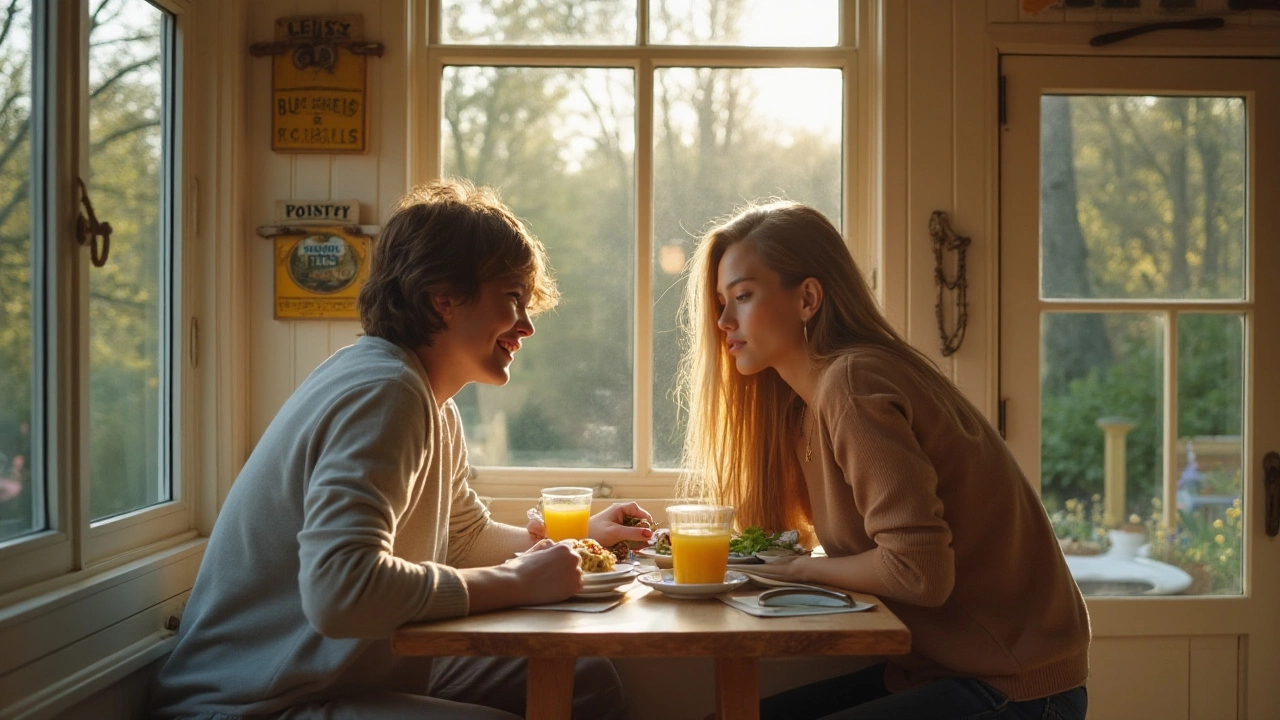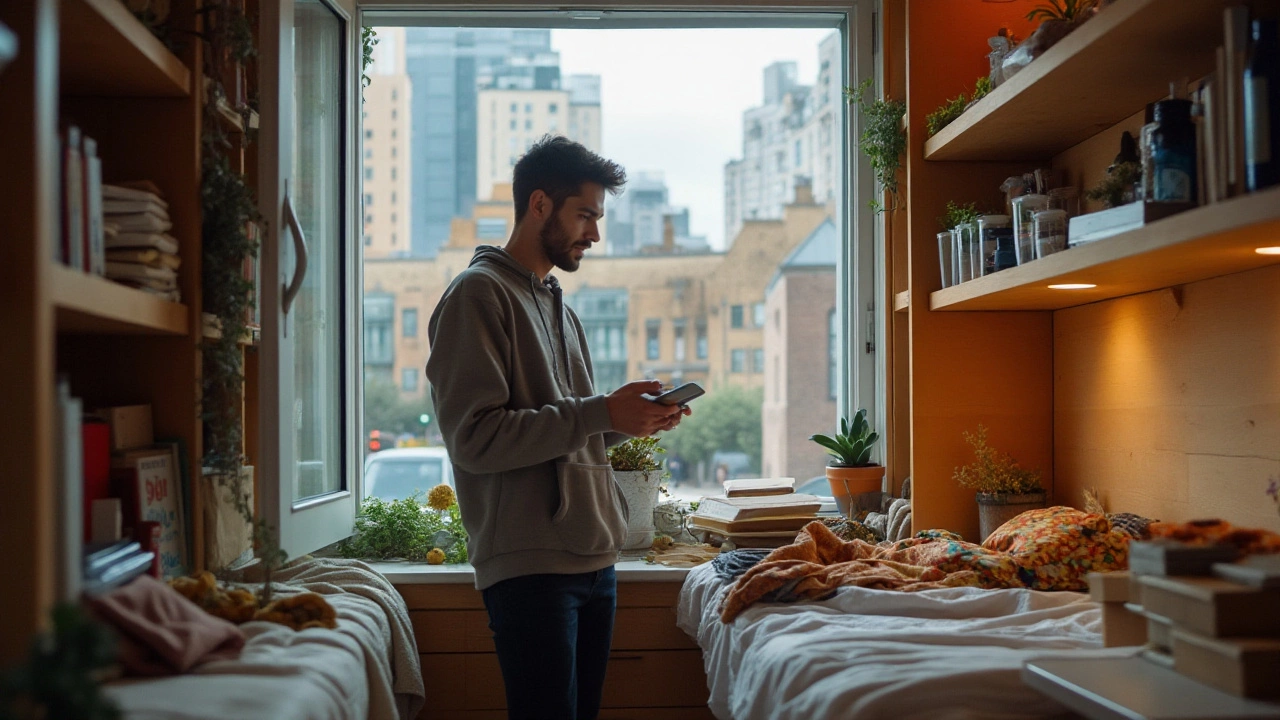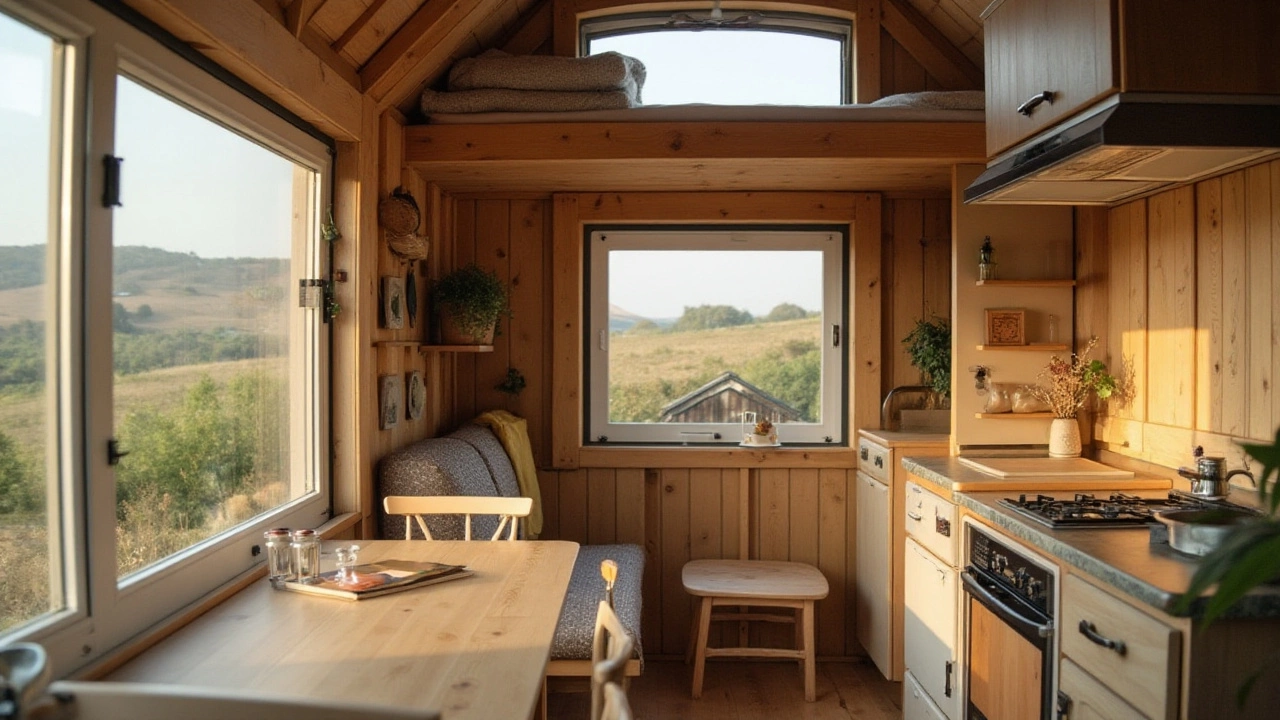Are you drawn to the allure of tiny house living? The promise of minimizing consumption, reducing environmental impact, and embracing simplicity is undeniably compelling. However, it's not all picture-perfect sunsets and cozy corners. The path to a minimalist lifestyle, often embodied by those snug eco-friendly cottages, is riddled with its own unique set of challenges.
Before packing your life into a few square meters, it's essential to explore the very real drawbacks of living within such confined spaces. From feeling cramped to grappling with a lack of privacy, every inch in a tiny house counts, often translating to significant lifestyle adjustments. But fear not, if managed well, these drawbacks can be turned into opportunities for creativity and efficiency.
- Space Constraints
- Privacy Concerns
- Storage Solutions
- Adapting Lifestyle
- Regulations and Restrictions
Space Constraints
In the realm of tiny houses, mastering the art of space is akin to playing a never-ending game of Tetris. Every nook and cranny becomes a valuable asset in this environment where even an extra cushion might feel like a space hog. Space constraints are often the most palpable challenge faced by anyone living in such eco-friendly abodes. As you navigate through the daily grind in a tiny house, the absence of sprawling square footage becomes a constant reminder to live intentionally and resourcefully.
With space at a premium, furniture often takes on multifunctional roles, a strategy necessary for maximizing usability. For instance, a couch might double up as a guest bed, and a dinner table could serve as a workspace. The key is to carefully select items that fold, stack, or disappear when not in use. Such furniture innovation highlights the creativity inherent in tiny house design, where aesthetics often meld beautifully with practicality. As appealing as it sounds, it demands a mindset shift; you acquire only what you need and cherish what you have. Often, this leads to a cleansing of the mind, where one learns to let go of excessive possessions and develops a greater appreciation for simplicity.
Imagine hosting friends in a compact space. Here lies another challenge of living in a tiny house – accommodating guests might require rearranging or even temporary sacrifice of comfort. An evening gathering can mean pushing furniture to odd corners or, worse, stepping on toes! However, for many, this minor inconvenience is well worth the joy of sharing their innovative living space with friends. People often remark that tiny houses create conditions that bring people literally closer together, perfect for intimate visits, but not as forgiving for larger gatherings.
Yet, there are ways to thrive despite these limitations. One approach is embracing the outdoors as an extension of your living space. Outdoor decks, patios, or even a small garden can provide a much-needed alternative venue for relaxation and entertainment. Also, smart mirrors or strategically placed reflective surfaces can create an illusion of depth, subtly expanding the visual perception of confined areas. Nifty storage solutions can make the most of your vertical space, utilizing shelving that climbs to the ceiling or inventive underfloor storage units.
As architect Graham Hill aptly puts it, "Edit ruthlessly. Clearing out the non-essential makes room for life’s important aspects."
Moreover, data suggests that those living with fewer square feet tend to adapt by spending more time engaged in their community or surroundings. They frequent local cafes, parks, and libraries, inadvertently weaving themselves more tightly into the social fabric of their neighborhoods. This could be an unexpected but delightful outcome of living compactly, focusing less on having but more on being. Also, maintenance of such spaces is often simpler and quicker, saving precious time and energy for other pursuits.
Here’s a glimpse into the world of spatial adaptation with some creative solutions:
- Opt for furniture that incorporates storage, like ottomans or beds with drawers underneath.
- Use fold-down tables or desks that can be neatly stored when not in use.
- Hang pots, pans, or even bicycles to clear floors and counters.
- Rotate seasonal wardrobes to keep closet space free and functional.
The allure of tiny house living is indeed rooted in an innovative use of space. It’s a beautiful reminder of how a struggle with spatial limitations can, in fact, cultivate a richer and more mindful experience of home. Transforming a small area into a feast of creativity, efficiency, and warmth is what makes tiny house living a captivating choice for many.
Privacy Concerns
Living in a tiny house can be a charming adventure, but when it comes to privacy, it presents some unique challenges. In a space where barely a wall separates the ‘rooms’, solitude becomes a luxury. Every whisper, sneeze, or late-night snack is shared among occupants, making it critical to rethink the concept of personal space. Imagine a cozy space where every sound reverberates and discretion becomes a daily negotiation. This lack of boundaries can be a particularly poignant drawback for those accustomed to having a dedicated personal space for work or relaxation.
One simple move that many tiny house enthusiasts adopt is the strategic use of curtains, movable walls, or sliding partitions. These flexible dividers can offer a semblance of separation, granting a few precious moments of solitude in a bustling miniature habitat. Emphasizing soundproofing can also be an ally; using surfaces designed to absorb rather than reflect sound can help keep private conversations truly private. It's not uncommon for inhabitants to adapt their routines and technology, embracing earphones and whisperquiet tech solutions as part of their daily toolbox.
For those who live in eco-friendly cottages, embracing this lifestyle means learning new systems of coexistence. A tiny home’s inhabitants often become masters of non-verbal communication, setting schedules and signals that convey the need for personal time without words. This level of awareness can actually foster stronger relationships, as it mandates respect and mindfulness of each other's needs. Despite the close quarters, this inherent lack of privacy teaches respect for boundaries that might be taken for granted in larger homes.
"Adapting to a tiny house requires more than physical adjustment," says Jane Doe, a renowned minimalist living expert. "It's a mental shift towards appreciating subdued tones of privacy and redefining personal space."
Statistically, those who live in tiny houses report higher levels of satisfaction with their relationships, crediting the closer proximity as a catalyst for improved communication. However, it’s vital to note that effective space management takes thoughtful planning. Considerations will include not only the physical layout but also the daily life rhythms of its occupants, enabling harmony amid confines.

Storage Solutions
When you embrace the intriguing world of tiny houses, storage solutions become the cornerstone of your new life. The primary challenge is optimizing every nook and cranny without sacrificing the aesthetic or functionality of your compact abode. Unlike traditional homes, where space might seem infinite, tiny house living demands a meticulous and thoughtful approach to storing your belongings. Cleverly designed furniture, such as beds with built-in drawers or tables that fold into walls, provides excellent solutions. However, it's not merely about installing these pieces but understanding their placement and usage within your limited space. You might say, it’s a bit like playing Tetris, where every piece fits perfectly to create a seamless and efficient whole.
"Storage should be multifunctional, invisible, and easily accessible," advises minimalist architect Sarah Susanka, a leading voice in sustainable residential design.
Adding to that, vertical storage spaces can revolutionize your tiny home experience. Shelves that climb walls and baskets suspended from ceilings keep possessions at hand while leaving prime floor space open for daily activities. In the realm of eco-friendly living, it's equally vital to consider the sustainability of the materials you use. Opting for reclaimed wood or recycled metals aligns with the ethos of eco-friendly living and aids in crafting a more sustainable future.
Creative Approaches to Organize and Maximize Space
One can't understate the importance of decluttering when you embark on this lifestyle. Taking stock, prioritizing needs over wants, can significantly influence not just the space available but also your mental clarity. Consider these innovative approaches: vertical gardens which beautify and provide fresh produce, ladders that double as bookcases, and magnetic wall strips for tools in the kitchen. The essence lies in creativity and reimagining everyday items with a unique twist. Here, less truly becomes more, and quality over quantity takes the reigns.
| Storage Solution | Benefit |
|---|---|
| Vertical Shelving | Maximizes wall space while keeping floors clutter-free |
| Foldable Furniture | Allows for flexible space usage |
| Under-bed Storage | Utilizes dead space effectively |
In this ever-evolving journey of adapting to minimalism, continuously evaluating your storage needs is fundamental. What was once deemed essential might eventually become redundant, reinforcing the cycle of simplification and space optimization. Simple changes like acquiring storage bins with wheels for easy access or employing space-saving vacuums for seasonal clothing can significantly enhance your living standards, even within limited confines. So, as tiny house dwellers would say, ‘Everything has its place, and there’s a place for everything.’ With open mind and creativity, tiny house storage challenges transform into your new, liberating norm.
Adapting Lifestyle
Adapting to life in a tiny house is akin to embracing an entirely new philosophy of living. It's not simply about discarding unnecessary belongings; it's about reshaping how you interact with your space and environment. The transition from a conventional home to a more minimalist lifestyle can be daunting. Most notably, it involves a significant reduction in personal belongings, requiring careful deliberation about what is truly important and what can be let go.
In a society accustomed to bigger living spaces, reducing your possessions to fit within the bounds of a tiny house forces you to confront your relationship with material items. The focus shifts from quantity to quality. Each item retained must earn its place, offering either practical utility or significant personal joy. For many, this minimalism-inspired approach is liberating, enabling a greater appreciation of life's simplicities. However, it's not without its challenges. Balancing space for daily essentials and emotional keepsakes can be tricky, often leading to creative storage solutions that maximize every inch of available space.
Engaging with the outside world also takes on new meaning when your home is a tiny one. Social gatherings might move outdoors or into communal spaces, expanding your interactions beyond your immediate living area. This can foster a deeper connection with your community and natural surroundings, enhancing your sense of place and belonging. As the saying goes, your house may be small, but your world doesn't have to be.
Cultural anthropologist Margaret Mead once noted, "Never doubt that a small group of thoughtful, committed citizens can change the world." This sentiment rings true for tiny home dwellers who, through their living choices, are often at the forefront of promoting sustainable living.
Adapting to compact living conditions also means reevaluating daily routines. Tasks like cleaning and maintenance become significantly streamlined, freeing up time for activities you truly enjoy. Yet, it also demands that the activities and habits you previously took for granted be reconsidered, as space limitations might impose new constraints.
Finally, this adaptation often reflects an inward journey. Adjusting to life in a tiny house is as much about mental space as it is about physical one. It invites an introspective look at necessity, contentment, and sustainability. By focusing on experiences over possessions, many tiny house occupants report feeling a greater sense of satisfaction and purpose, living proof that a minimalist lifestyle can enrich rather than restrict.
Each of these changes, be they mental or practical, gradually aligns your lifestyle to the rhythms of tiny house living. Embracing these adaptations doesn't just make tiny house living possible; it makes it enjoyable and rewarding in ways that extend beyond the limitations of space.

Regulations and Restrictions
Navigating the world of tiny houses involves more than just figuring out how to squeeze your life into a diminutive dwelling. Like it or not, the dream of minimalism often hits a significant roadblock when confronted with local regulations and restrictions. Before setting your heart on a plot of land, it's crucial to check whether your tiny home is even allowed there. Zoning laws, building codes, and neighborhood covenants vary dramatically across regions, and each can pose unique challenges for tiny house enthusiasts.
Zoning laws can be a labyrinth of complexity. In many areas, these laws dictate how land can be used, what types of structures can be built, and their allowable sizes. A potential issue that often arises is the minimum square footage requirement for homes. Many places have laws that preclude any dwelling smaller than a certain size, which can be a significant hurdle for tiny house advocates. Building codes, on the other hand, focus on safety and health standards, addressing everything from plumbing to electrical systems, which might be less flexible for alternative living structures.
Legal Hurdles
Another layer of complexity is introduced by neighborhood and homeowner associations. These entities might have their own set of rules concerning aesthetics and architectural harmony that tiny houses might not meet. It's not uncommon for these associations to have restrictions that prevent the development of any homes that stray from traditional appearances or sizes. This creates a paradox where, despite the eco-friendly ethos of tiny house living, they might not fit into planned communities striving for a uniform look.
"Building a house is no small feat, even when it's small," said Sarah Hastings, a tiny house advocate who successfully lobbied her local council to change regulations in Massachusetts.
Compliance and Advocacy
For many, the road to complying with these laws is marked by advocacy and education. Some have found success in working with local governments to adapt policies that are more inclusive of tiny homes, emphasizing their benefits. This often involves participating in public forums, presenting at council meetings, or forming coalitions with like-minded individuals to demonstrate the value and sustainability of eco-friendly living. Advocacy can help in highlighting the potential of these humble abodes to contribute to affordable housing and reduce carbon footprints.
Practical Steps Forward
- Engage with your local government early in your tiny house journey. Their planning or zoning department can provide valuable insights into what is possible within your area.
- Consider working with a professional who understands building codes and can help ensure your abode meets all necessary regulations.
- Explore diverse locations that may have fewer restrictions, such as rural areas or places with existing tiny house communities.
- Build relationships with neighbors and community members to garner support and dispel myths about tiny houses.
These challenges, while daunting, are not insurmountable. Many tiny house dwellers have paved the way, proving that with determination and creativity, it's possible to live the compact yet fulfilling life they desire, despite the red tape.
